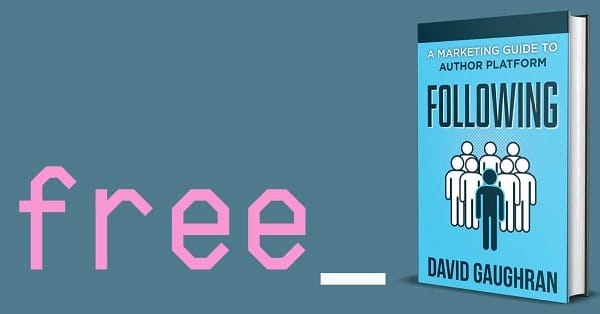What truly makes something go viral? It’s hard to say.
Sure, afterwards, we can all point to something — with the crystal clear vision bestowed by hindsight — and list off elements which contributed to the explosion: it had a cute dog bouncing on a trampoline or just the right amount of indignation, it was funny and there was a well chosen emoji, it was topical or it tapped into some lingering but unspoken resentment about a hot button issue… that list could go on forever.
Trying to assemble a Franken-thing that ticks all those boxes will quickly show you that this retrospective diagnosis is missing something — the X-factor that makes one thing go viral and another thing, which was very like it (or even “superior” in many ways), do the exact opposite.
I’m not going to tell you what that X-factor is. I’m not even sure anyone can answer that with confidence. If you had to push me, I’d say it’s probably luck, as long as we allow timing to share luck’s umbrella.
And if you think that’s a dodge, wait for this: it doesn’t matter.
Going viral has less value than you think. Unless you are more interested in celebrity than building something more meaningful, then going viral often has very little lasting value.
I’m a million times more interested in money than fame. If it was an actual choice, I wouldn’t have to think about it at all — give me the bag of gold and I’ll be a happy hermit. This might surprise anyone who hasn’t gone viral so let me share some experiences.
A close friend of mine went viral last week after posting something to Facebook. Her personal page too, not her business/author page. It wasn’t a new release announcement or ad. It wasn’t anything that was going to put money in her pocket or promote or books or company in any way. It was a funny post, but with an underlying serious message that obviously resonated with a lot of people because it got something like 30,000 Facebook shares. That’s a lot of eyeballs on a post that might otherwise have been seen by a couple of hundred people.
The first thing you should realize about something like this is that you don’t get to choose what goes viral. You might prefer it to be something which could provide more tangible benefit — like maybe something that had a link to one of your books — but you don’t get to choose what goes viral.
(I should note that these things genuinely can have real value which transcends grubby monetary concerns, and I know that my friend both enjoyed the experience in itself, and was also deeply touched by how that post made so many people feel, but we’re strictly talking about business and marketing stuff here, not the emotions of puny hoo-mans.)
And if you start pumping out stuff that is explicitly designed to go viral, you just end up turning into a clickbait pusher, telling people 7 Reasons For This and How To Do That and pretty soon you are just regurgitating the historically common elements in viral posts in an empty and robotic way, and your site descends into slideshows of desperation.
You don’t get to choose what goes viral. You can’t make something go viral. And you shouldn’t care either.
More personal experience: I’ve gone “viral” a few times. Not like meme-ing my way to an appearance on Ellen, or being shared by George Takei, but my old WordPress site was officially certified as “Stephen Fry-proof” which was a jokey designation if you were able to handle a sudden, unexpected, and massive spike of traffic, as if you had just been tweeted by Stephen Fry.
In my case, I actually was tweeted by Stephen Fry, so it was literal. I think I had 60,000 visitors in an hour or something insane like that. Luckily, I wasn’t self-hosted at that point or I could have fried my servers (and my pricing plan!). But the good people at WordPress.com had systems in place to handle viral outbreaks like this and cycle in beefier servers, so the site was able to stay online with nary a burp.
Cards on the table: the first time it happens it’s a huge rush. You are refreshing the numbers every ten seconds, watching them climb and climb and CLIMB. And, of course, because the brain often needs to be treated as a hostile witness, you start thinking, “Maybe I’ve finally made it!” or other such hilarious nonsense.
I should note that, unlike my friend’s example above, the first time this happened to me it was actually was a blog post which was totally nailed on for my audience, so it was natural to think that the traffic surge would be comprised of people I could potentially sell books to, or at least maybe get blog sign-ups, or Twitter followers, or email subscriptions.
But none of that really happened, not in meaningful numbers.
The first time, I blamed myself. I reorganized my website. I changed up my book links. I made my blog subscription more prominent. Tried to clean up my act and sharpen my hooks, and just make everything look more pro. Next time it happened… well, to be honest, I blamed myself again! And tweaked all that stuff again.
After a few times the penny started to drop. (While I am a slow learner, I’m not a total lost cause.)
Here’s the deal: this kind of traffic is drive-by traffic. The very fact that you have gone viral is usually a sign you have gone beyond your target audience.
Drive-by traffic isn’t sticky. These people don’t hang around. Well, maybe a handful will, but if you expect a meaningful chunk of the 10,000 or 100,000 or 1,000,000 people who clicked on your post — because the planets happened to align that day — to turn into fans or readers or customers or prospects, you are going to be very disappointed. It’s not junk traffic per se, but you haven’t struck gold either.
It’s kind of like press attention, in a way. Something that can be nice to happen, as long as you don’t treat it with too much seriousness, and don’t expect it to change your life or throw your book to #1 or land you a big deal.
Again, that’s not to say there is no value in going viral. In my case, I was able to influence a public conversation that I felt strongly about. That has huge personal value to me — I genuinely cared deeply about the issue. But in pure mercenary terms, it did little or nothing for me. Which makes it a terrible thing to shoot for if you are trying to sell books, or boost sign-ups, or make money, which will all need to do now and then.
What does lead to success on those fronts is the slow, hard slog of producing things that people want and getting it into their hands. Building something over time that people need, something real, something substantial. Targeting those people with laser-like precision. Drilling down into the subset that digs your stuff, whatever that may be, and working that niche crowd. Not the bigger one surrounding it.
And if you do go viral, what will make those few stick around is that slow, hard slog you have already put in, not the dog picture, however cute he might be. Sorry, Fido; you still get a treat.
One last thing…
I hope you enjoyed this post! I just wanted to let you know that I send out exclusive content every Friday to my mailing list subscribers.
I talk about the latest tricks with Facebook Ads or BookBub Ads, I also get into topics like content marketing, reader targeting, and everything else under the sun that pertains to building audience and reaching readers.
By signing up to my list, you get access to the all the old emails too, as well as sneak previews of upcoming books (meaning you get the jump on the latest tricks strategies of everyone else), and exclusive discounts too.
You also get a FREE copy of Following – a book that you can’t get anywhere else! I strongly recommend that you join over ten thousand authors and sign up today because there are all sorts of bonuses you will enjoy.



So true! I had a meme I made go viral a couple months ago. It was being shared from my meme page and had around 12k shares in a matter of hours. I have a sticky post with t-shirts for sale, and I thought just like you described, “Ooh I’ve made it! One million+ views? If only one percent of them buys a t-shirt, that’s ten grand!” etc. Not one shirt sold. It was a nice little dopamine rush for a couple days, and fun to see my friends saying they stumbled upon my meme in the wild here and there, but that’s about all it amounted to. Oh and a thousand new subscribers to my meme page.
This was fantastic, thank you!! It helps to have a realistic understanding of what going viral can and can’t do for you! Thanks David!
Thanks David, agree with your summary, work the same way with my author-related content.
My favourite line – “as the brain often needs to be treated as a hostile witness”! I experienced that kind of delusion (Netflix are coming for me!) when one of my books took off on Wattpad. Brilliant insight as ever, Mr Gaughran.
Going viral on FB is good for one thing and one thing only: Adding followers to my page. And that happens rarely because most of my viral content is shared without credit. In fact, I just spotted a graphic I made last year (it’s still making the rounds!)
you write such great post 🙂
Virality is way overrated.
I’m a co-admin of a YouTube channel where our videos sometimes get hundreds of thousands views. Once we even did a livestream with up to 60K simultaneous viewers. But, after a day or two, traffic is back down a couple orders of magnitude.
Small b blogging is a more realistic approach.
Way overrated! And aside from over-imagined benefits, it makes you push the wrong kind of content and target the wrong audience.